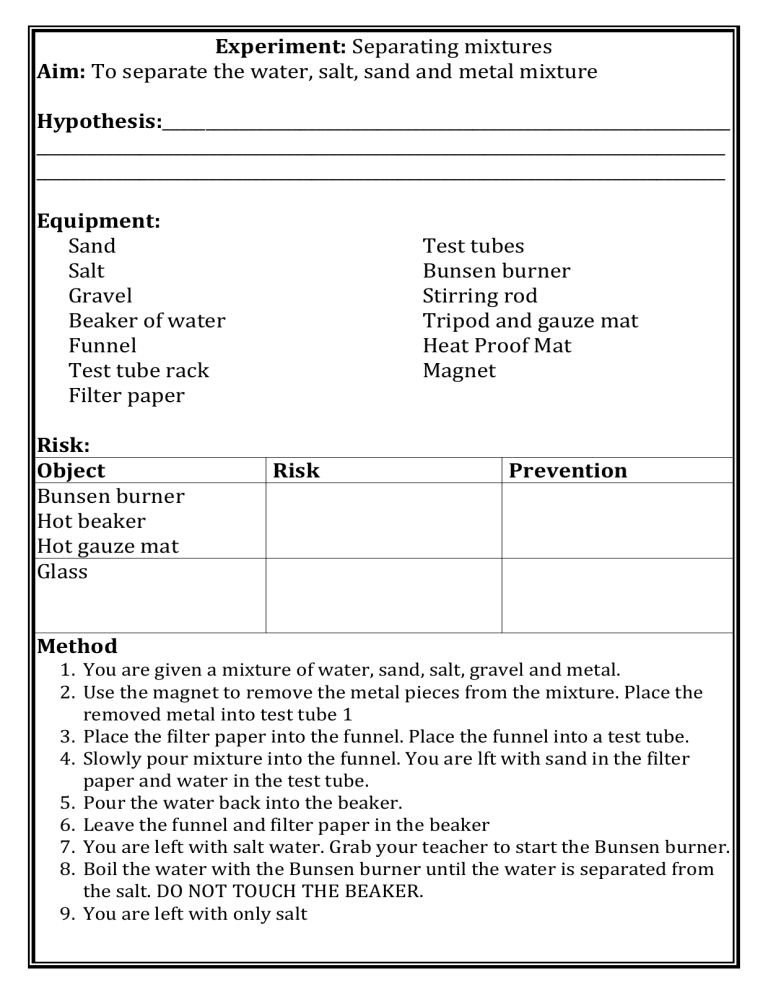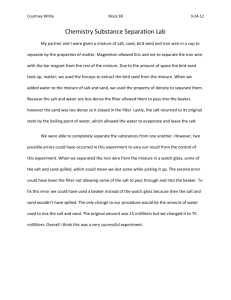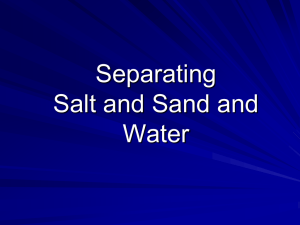
Experiment: Separating mixtures Aim: To separate the water, salt, sand and metal mixture Hypothesis:__________________________________________________________________ ________________________________________________________________________________ ________________________________________________________________________________ Equipment: Sand Salt Gravel Beaker of water Funnel Test tube rack Filter paper Risk: Object Bunsen burner Hot beaker Hot gauze mat Glass Test tubes Bunsen burner Stirring rod Tripod and gauze mat Heat Proof Mat Magnet Risk Prevention Method 1. You are given a mixture of water, sand, salt, gravel and metal. 2. Use the magnet to remove the metal pieces from the mixture. Place the removed metal into test tube 1 3. Place the filter paper into the funnel. Place the funnel into a test tube. 4. Slowly pour mixture into the funnel. You are lft with sand in the filter paper and water in the test tube. 5. Pour the water back into the beaker. 6. Leave the funnel and filter paper in the beaker 7. You are left with salt water. Grab your teacher to start the Bunsen burner. 8. Boil the water with the Bunsen burner until the water is separated from the salt. DO NOT TOUCH THE BEAKER. 9. You are left with only salt Results: Pure Substance How did we separate it? Conclusion Separating mixtures is easy as long as you understand the properties of each pure substance. To remove metal from our substance, we used __________________. Sand, salt and water do not respond to magnets, so we need to use another method. We used _____________________ _________________ to separate gravel and sand from the salt water. Finally we were left with a ____________________ and ____________________ mixture. To separate this mixture we used the Bunsen burner and a process called________________________. In this experiment we found that to separate a mixture you need to understand the properties of each ___________________ _________________. Pure substance, filter paper, salt, evaporation, water, magnets, sand, gravel.



